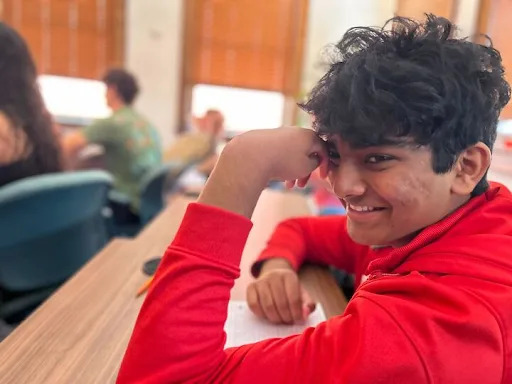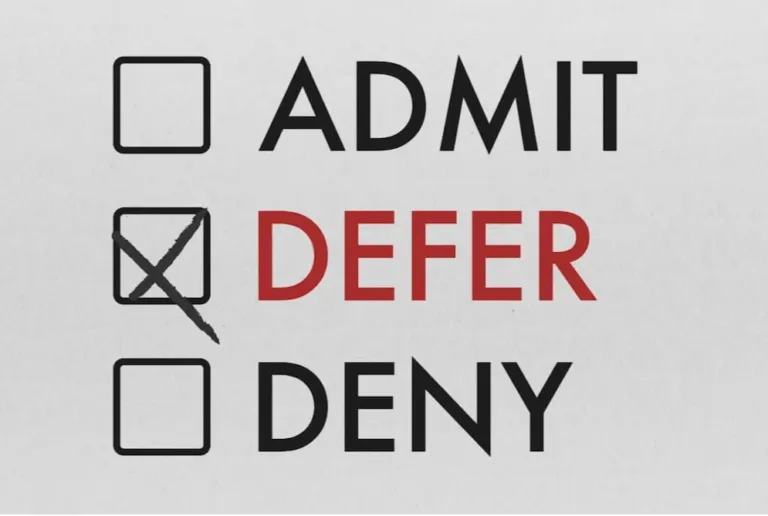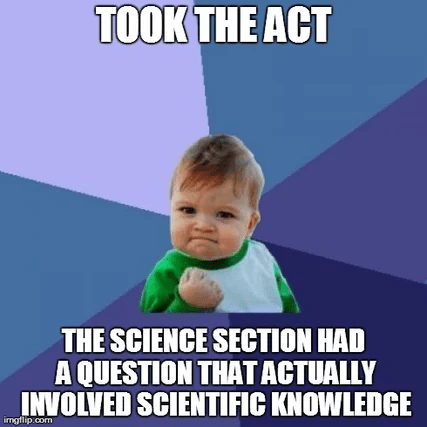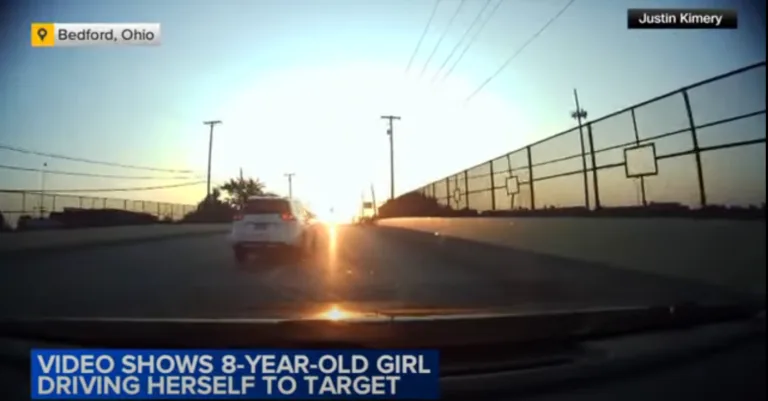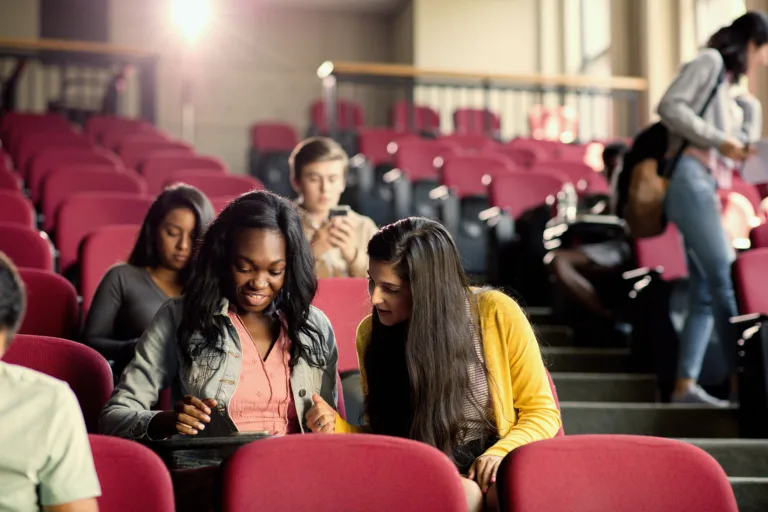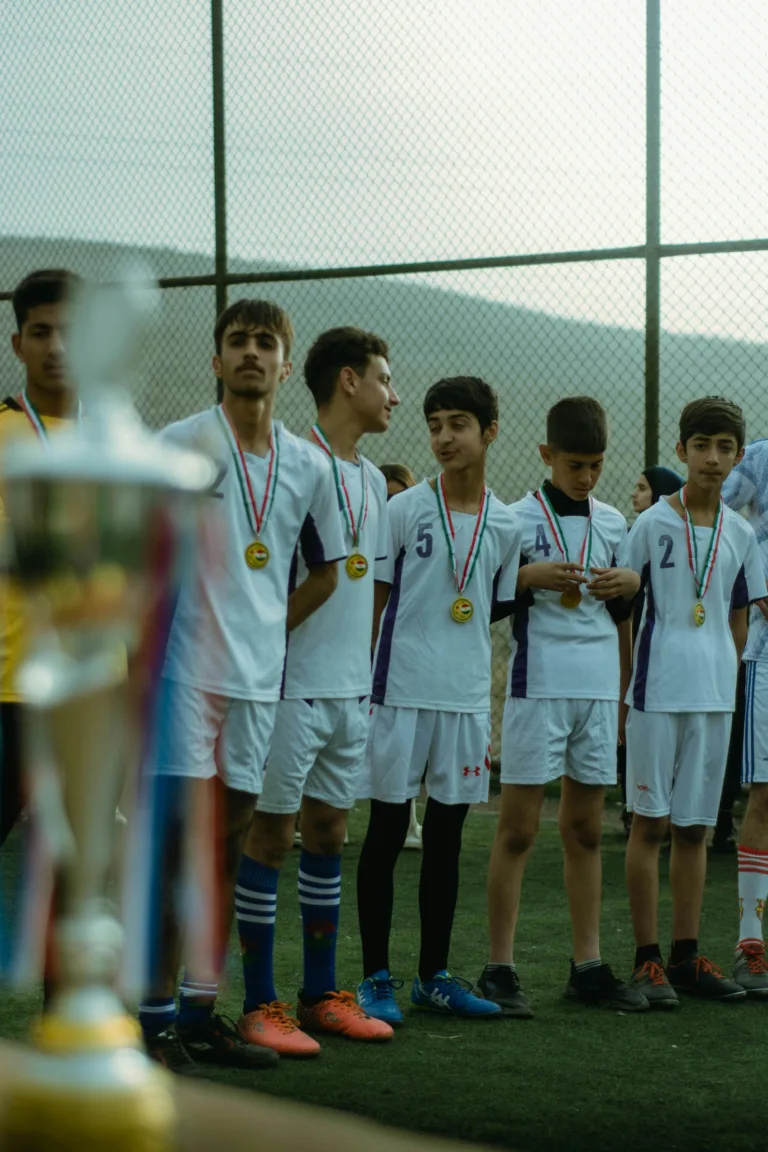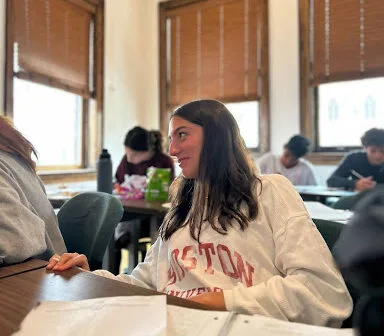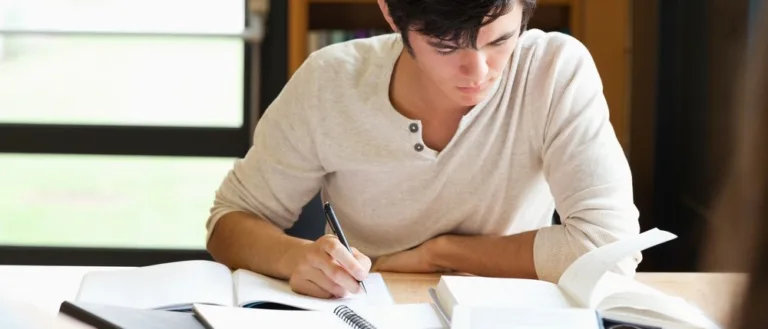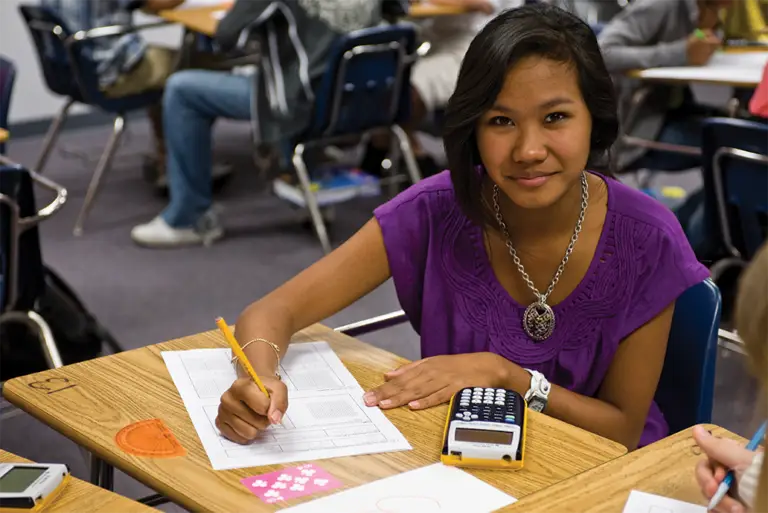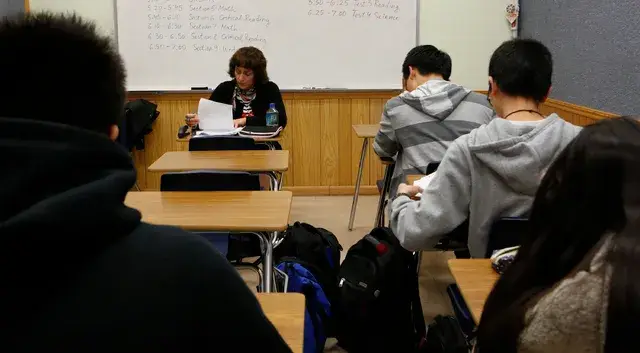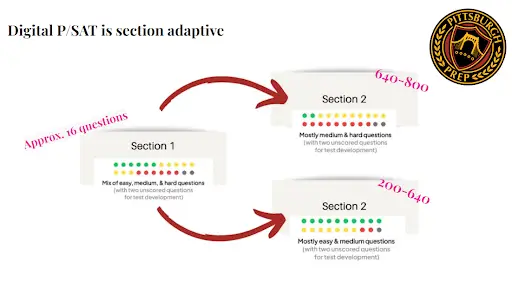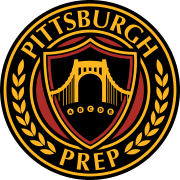
Have you been recognized by STEM teachers for your interest and excellence in science or math courses? Have you made investments outside of the classroom in STEM fields, such as research projects, extracurricular organizations, or internships? Then it is likely that you’re thinking about applying for the Pennsylvania Governor’s School for the Sciences (or, simply known as “Governor’s School” or PGSS here in Pittsburgh), an award-winning intensive program for gifted students interested in STEM.
PGSS is an incredible opportunity open to high school juniors who are residents in PA since it prepares them with college-level courses and interactive hands-on laboratory research experiences that nurture their interests. It’s also highly competitive — each year, PGSS receives over 500 applications and accepts around 18% of those applicants. Therefore, your application materials need to stand out with compelling narratives and a demonstration that you have been preparing yourself for such a program.
Before we begin examining the application prompts and sample essays, it’s important that you take time to learn about the PGSS and its mission. We recommend reading about the PGSS and what it offers, its history, and its mission and vision statements. This will give you an idea of the types of courses, projects, and interactive opportunities offered by the program. Finally, we recommend taking a look at the PGSS Journal Archive, where students have published their research in the PGSS Journal – you can learn more about student work from previous years. By learning more about the program, you will be able to more carefully demonstrate why you belong there and how the PGSS will enrich your future goals.
Note the following:
- Merit-based: Admission is based on merit, with one qualified student from each Intermediate Unit accepted
- Minorities and under-represented: Students from under-representted communities highly encouraged to apply
- No Cost: Expenses are fully funded (FREE) for all accepted students through the generous donations from benefactors
- Immersive Experience: Live and study on the beautiful residence hall Hamerschlag House, and campus of Carnegie Mellon University
- Build Your Resume: You’ll have an amazing opportunity to become an expert in the research topic that will be published in the PGSS Journal, and build your resume for college admissions
- Collaborative Environment: There are no grades (woot) and the work will be incredibly difficult to solve individually without the participation of peers, so the environment is ripe for collaboration without undue pressure
- Application deadline: January 31st, 2024, notified by April 15th, 2024
After you’ve begun researching the program, let’s take a look at the essay prompts required by the PGSS.
What are the Pennsylvania Governor’s School for the Sciences prompts?
Please respond to Essay 1 and one other topic of your choice from the Essay 2 options below (2 Essays total).
When writing drafts, keep in mind that there is a 5,000-character (750-1000 words) limit for each essay. This is approximately two pages of double-spaced Times New Roman at size 12. Although the admissions committee will never be able to see any of your drafts, we recommend writing your rough drafts elsewhere and only pasting your final copy in the application.
Essay 1 Prompt
Use this section to personally introduce yourself to the admissions committee. Discuss why you wish to participate in scientific or mathematical research and what you hope to gain from an experience like PGSS. Try to be as specific as possible about why you are willing to spend five weeks of your summer to come to PGSS and why you think the committee should choose you. You may include information about your background, your interests, your pastimes (academic and non-academic), and any other aspects of your life that will aid the committee in understanding who you are and why you want to participate in PGSS.
Essay 2 Prompt
Option a: Scientific or Mathematical Achievement
Describe the science- or mathematics-related achievement of which you are most proud.
Explain why you are particularly proud of it.
Option b: Most Influential Person or Event
What single person or event in your science and mathematics education has been the most influential in your decision to pursue a career in science or mathematics? Please be specific about why this person or event has been so influential.
How to write the supplemental essays for Pennsylvania Governor’s School for the Sciences
How to write the Pennsylvania Governor’s School for the Sciences Essay 1 + example
This essay is incredibly important because it is required of all applicants, so you need to create a compelling narrative that stands out. This narrative should demonstrate your passion for STEM and how you have invested time in your field of interest both in and outside of the classroom. Your narrative also should set up how you have prepared yourself for the program, should demonstrate knowledge of what the program offers, and, through those two crucial pieces, will demonstrate why you are the perfect candidate for the PGSS. Effectively, the admissions board wants to know that the pursuit of STEM is an integral part of your identity, and that participating in the PGSS will be of personal value and enhance your future career.
One of the PGSS missions is to diversify STEM fields, and the admissions board is looking to accept students who have unique experiences and identity characteristics. It is recommended that you think carefully about anything that you think sets you apart from others—this could include race, ethnicity, gender, sexuality, religion, etc. Demonstrate how you will enrich the PGSS community with your personal background!
Sample Essay
NASA’s Jason Rhodes notes that everything we know about our world, space, and beyond accounts for only about 5% of the universe, and the other 95% of the universe is completely unknown to us. This means all the planets, moons, and other celestial objects in our solar system, the Milky Way, Andromeda Galaxy, and several other galaxies, though humongous on the human scale, still make up only that small percentage. The unknown is the backbone of physics and astronomy—two of my favorite subjects in school. These questions bewilder me and motivate me to join that process of discovery. I believe that we, the next generation of scientists, will be able to answer those questions. I have already tried to augment my scientific knowledge and background at every opportunity, and I am ready to take it to the next level with the PGSS.
During 9th grade, I completed the AIU apprenticeship for astronomy, which was so exhilarating that last spring, I volunteered at the Buhl Planetarium of the Carnegie Science Center of Pittsburgh for six months. To share my joy for astronomy while volunteering, I quickly educated myself even more in planetary science. I had the pleasure of answering visitor questions related to the planetarium and moderating demonstrations for them. These demonstrations included topics such as the expansion of the universe, the formation of stars and planets, and the effects of sunlight on our climate. It was fun to foster little kids’ enthusiasm about science, and it was even more fun to see them get particularly excited about astronomy. I could relate to that wide-eyed excitement that the kids—and even some adults—felt when they remembered and mentioned certain fun facts about astronomy. I realized that teaching helped me increase my knowledge and forced me to keep my thinking cap on at all times.
I have been part of my Science Bowl team since 6th grade and have educated myself on many aspects of science to give our team a better chance in the competition. Over the last two years, I tasked myself to master chemistry in preparation for the event. During the summer before 10 th grade, I completed a college-level course on chemistry as preparation for AP Chemistry. This put me a year ahead of my peers and gave me an edge during the Science Bowl competition that year. I am now taking AP Physics 1 and 2 this year to expand my interests. The class has reinforced my curiosity and wonderment about physics. I spend hours every day studying aspects of chemistry and physics not covered in school to ensure our team wins the competition.
The other research field I feel passionate about is Computer Science, specifically machine learning and artificial intelligence. My fascination increased when I started working on my eye-tracking project for the Pittsburgh Regional Science and Engineering Fair and the Pennsylvania Junior Academy of Science. My goal was to create a cost-effective and user-friendly eye tracker that maps what the subject is gazing at on the computer screen. Before this endeavor, I rarely reflected upon the technical aspects of computers’ functions and the possibilities of its breakthrough progress. I started paying attention to all built-in aspects of technology around me, including smartphones, gaming, streaming technology, and more. While creating this eye-tracking software using Python and OpenCV programming, I began to understand its simplicity and complexity. The more progress I made with my project, the more questions I had than answers.
Through researching these questions, I figured out that one of the best ways to increase the eye-tracker’s efficiency was to use machine learning, particularly Convolutional Neural Networks (CNN). To learn more about these, I took a Digital Humanities Machine Learning course over the summer of 2021. I learned about many different supervised and unsupervised machine learning algorithms. I ultimately led a group of students to create a CNN that can establish a date to Italian poet Giacomo Leopardi’s manuscripts. This project was in collaboration with Professor Paola Italia from the University of Bologna. Our algorithm was very successful, with an 87% accuracy rate. This course taught me the importance of machine learning in our everyday lives, and the potential it has to revolutionize our future. I have since implemented a CNN in my eye-tracker, and it has greatly improved its accuracy. Though this is one place where machine learning can be applied, there are innumerable applications where it can impact and improve lives.
The PGSS experience in the summer of 2022 will further hone my skills in STEM research and I
plan to immerse myself fully during the 5-week experience. I am looking forward to enhancing my collaborative skills and glimpsing my future career path. I can’t wait to be an integral part of the scientific community and help understand the other 95% of our scientific universe.
Pittsburgh Prep's Expert Analysis
- The introduction: Notice that the first several sentences of this student’s essay highlight a somewhat shocking fact about the universe. By presenting something that they find personally fascinating and profound, the student inherently invites the reader to be curious not only about the fact they are citing, but also about themselves.
- Demonstrated efforts in and out of the classroom: This student describes not only the courses they have taken at their high school and a local college, but also experiences through other organizations. The student is careful to show that, in their free time, they continue to learn about science and grow their knowledge. This demonstrates ideal character traits of a PGSS student: motivated, curious, intelligent, and passionate.
- Demonstrated collaboration: In both the class settings and research opportunities for PGSS, students will need skills, such as good communication, flexibility, and the ability to creatively problem solve in a group. This student shows that they go beyond learning for individual growth, and apply their knowledge through teaching and leadership.
- Demonstrated expertise: This student cites projects they collaborated on and makes sure the story is credible by citing specific details about the work they did. For example, they cite the coding languages they mastered to work on machine learning (Python and OpenCV). Further, they show how the projects they worked on opened their eyes to larger questions and creative solutions—for example, the CNN developed with Dr. Italia was later used to improve the eye-tracker. This shows that the student is able to think beyond the current project and see a wider purpose for their research.
Tip: The only element of this essay that might be improved is the specifics of what the student hopes to do at the PGSS. The final paragraph is somewhat vague—they could mention previous student projects that interest them, courses or electives they are excited about, or larger mission elements of the PGSS that they connect with to convince the reader that they are a perfect fit.
How to write the Pennsylvania Governor’s School for the Sciences Essay 2a + example
Option a: Scientific or Mathematical Achievement
Describe the science- or mathematics-related achievement of which you are most proud. Explain why you are particularly proud of it.
This essay is aimed at highlighting how you have actively pursued at least one STEM-related
project, preferably outside of the classroom. It is recommended that you begin with a narrative that resonates with the admissions reader, and then emphasize any challenges you’ve overcome, larger problems you discovered that set up future work, or how the project helped you clarify your interests. Finally, it is crucial to SHOW, not simply tell — make sure you share specific details about the project to showcase your knowledge and gained expertise. (Note: It is important to note that this should be a different project from anything mentioned in Essay 1.)
Sample Essay
I love birds, but not only as a birdwatcher. They’ve also helped me develop as a budding computer scientist. When I visited Beechwood Farms, the headquarters of the Audubon Society of Western Pennsylvania (ASWP), for the first time, I was a sixth grader. The entire place resonated with big bird energy. Taxidermied birds adorned the conference room, posters of vibrant red Cardinals hung in the hallways, and cheerful Nuthatches chirped as I walked along the nature trails. The purpose of my visit was to present my meticulously designed 6th grade science project—a small but mighty motion-detecting camera. The project’s intent was to ultimately aid in natural research, and I emailed all the nature reserves throughout the city, including ASWP, to see if my camera could be useful in the field.
As I ran through the slides in a series of crafted clicks, narrating the potential technical application of my creation, I was surprised as Jim Bonner, the executive director, stood up from his seat and extended his hand to congratulate me. The culmination of my work had created a nest for its application: ASWP, impressed by my project, recruited me on the spot as the youngest member of their team. I was ecstatic.
I was tasked with monitoring Chimney Swifts, unique birds whose legs can only clutch to vertical surfaces. Faced with declining habitats, specialized roosts have been built throughout North America to house them. I took up the mission to augment and outfit these towers with my AI-powered system to detect their presence.
For three years, I became obsessed with machine learning to perfect my AI-powered camera. It even became the centerpiece of my seventh- and ninth-grade science fair projects. However, it was frustrating to run into repeated problems that often surpassed my own coding abilities as a 12-to-14 year-old. Chimney Swifts are hard to work with, though I’ve come to love them all the same. They’re dark and quick, which means that they show up poorly on video. They also roost at dusk, a dark setting that decreases camera clarity. Though I had spent over 200 hours on this project with ASWP, I was ultimately unable to create a system that could accurately detect the Chimney Swifts. My heart felt heavy because I felt like I failed ASWP and let everyone down.
But Jim, the kind, compassionate mentor that he was, never showed disappointment in my efforts. Instead, I’ll always carry a fond memory of him constantly supportive throughout my time at ASWP. His mentorship created within me a profound appreciation of empathy in the face of failure. As a result, I’ve come to embrace the warmth of failure as part of my growth—a notion that is mirrored in machine learning, where models learn by first making random predictions that result in an initial accuracy of 50%. Over many epochs, or training cycles, the model optimizes for a lower loss value, the weights values slowly change, and accuracy slowly increases. Failure is necessary for success.
Pittsburgh Prep's Expert Analysis
- The intro: In this case, the student introduces the reader with their initial statement. In stating the connection between two seemingly unrelated things (bird watching and computer science), the student plants a natural question in the reader’s mind: “What is the relationship?” The essay then goes on to explain the relationship in meaningful ways.
- The project’s success is not critical: Notice that the student’s project was not ultimately successful. This is totally fine; the student uses the end of the essay to reflect on the value of “failure” as a measure of scientific progress. This highlights that the student understands experimental design, the timeline and success rate of other projects, and, importantly, sees a potential extension of the project that could be approached in the future.
Demonstrated initiative: This student organized their own research presentation and spearheaded an effort to get their motion-detecting camera used by Audubon groups. This shows that they understand that research projects can have lasting impacts on the world and have considered the applications of work on which they have collaborated. This also shows an incredible amount of passion, a critical character trait that the PGSS admissions board is seeking in their student body.
Show, not tell: This student goes into great detail about their work, from the people they met and helped, the technology they created, and the specifics about the birds they monitored. This makes it clear that they learned an enormous amount from their experience, which they could share with other students at the PGSS.
Option b: Most Influential Person or Event
What single person or event in your science and mathematics education has been the most influential in your decision to pursue a career in science or mathematics? Please be specific about why this person or event has been so influential.
This question is meant to show that you have identified models and mentors who you hope to emulate in your own career. This could be anyone—a family member, teacher, researcher, etc. who you feel exemplifies the ideal character and professional life you hope to lead. This is a wonderful moment to demonstrate your investment in STEM outside of the classroom; for example, you might explain how you take time to read the latest scientific articles by a specific researcher, or you could describe how your internship mentor modeled professional ethics in their lab. Finally, this is another good moment to highlight diversity—perhaps your mentor shares your background, is an underrepresented identity group, or fights for diversity and equity in the field. Make sure to highlight that so that the PGSS admissions board knows that you, too, take their mission seriously.
Sample Essay
My biggest influence in life is my grandpa. Though my grandparents lived in India, I was
fortunate enough to spend an enormous amount of time with them. They would visit me once or twice a year and spend months staying with my family, which was a delightful experience for me. I got pampered a lot, but I also fondly remember my precious time with my grandpa. My grandpa is famously known within our family as a Math “Topper” in high school and college. He pursued a Ph.D. in mathematics, but, due to family obligations, he became an Administrator for the Indian Government. He is known for his intellectual abilities and could do complex math in his head without much effort even into his later years. Though he has since passed away, he has left an indelible mark on me, particularly my curiosity and lifelong learning.
Every evening during teatime, my brother and I would huddle together with our grandpa and spend time goofing around with him. We would play chess, read books, listen to music, build Legos, solve puzzles, and more. One of my favorite activities with my grandpa was story time. He would spend hours telling us many stories and we would be awestruck during them. My grandpa, being a proud math and science geek, always threw some interesting math or science titbits into the stories. He would casually include facts about gravity or numbers and then question us about it. This made story times much more interesting, as we both were not just involved in the listening but also made to actively think about critical facts. This had a lasting effect on my knowledge base and led me to question things when they do not make sense.
I remember one time when he was reading the book Jack and the Beanstalk. Naturally, as a child, I became scared of the giant and did not want to continue reading the book. My mom describes how my grandpa, seeing my sincere fright, took me on a tangent. He asked me to wear a metaphorical “Thinking Hat” and question the possibility of a real-life giant, which made me think critically. Looking back on that moment, Grandpa made me think logically and see the absurdity of the possible existence of a real-life giant. Since then, when I am faced with fear of anything, I wear my critical “Thinking Hat” and invariably get over the anxiety or fear through facts and reasoning. This style of reading and questioning has continued to serve me well—even to this point—as I look for patterns and query ideas or actions that do not fit the picture.
My grandpa noticed early on that I especially liked solving puzzles and Legos, so he presented me with my first Rubik’s cube when I was in elementary school. I had an instant connection with it and started spending hours trying to figure out a way to solve it. The first time I solved it, it took me a few hours, but I was persistent and figured out patterns to solve it faster. To this day, I continue practicing, and I can proudly say that my best solve was in 8.4 seconds. In elementary school, I developed an algorithm to teach others in my class how to solve these challenging puzzles. I also enjoy other Rubik’s Cube puzzles, including the 4×4, 5×5, and the dodecahedron Megaminx. During the COVID-19 pandemic, I spent an enormous amount of time learning methods to solve these new puzzles. I learned to memorize a 3×3 Rubik’s Cube and solve it while blindfolded, and can now solve a 4×4 while blindfolded, too.
My grandfather also got me very interested in chess, and my parents signed me up (through the Pittsburgh Chess Club) for lessons at a very young age because of him. I attended many tournaments in elementary and middle school, and I have won multiple trophies. I continue to practice in my free time on the website chess.com. At the beginning of this school year, I started a Chess Club at my school because I wanted to share my excitement with others. Through collaboration with other members of this club, I learned much more about the game and was elated when I reached a 1700 rating on chess.com.
As I learn more and more complex topics in math and science, I realize that progress in science happens by asking inquisitive questions when the data or outcomes do not make sense. My parents have always told me that I ask too many questions when I am given a task at hand. Though it could be annoying to adults at times, I strongly believe that this ability to wear my “Thinking Hat” and not take anything for granted has been instrumental in my desire to pursue a career in science and math.
My grandpa believed in me. He believed in my ability to comprehend concepts early in life. This instilled within me a great sense of confidence. He encouraged us to ask so-called “stupid questions” without being ashamed, giving us the freedom to question everything. I am sure this belief is the seed that grew into the giant beanstalk that is my current desire to pursue a career in science and math.
Pittsburgh Prep's Expert Analysis
- Demonstrated diversity: This student mentions that their grandparents are from India, sharing their own background and ethnicity as an Indian-American student. From the narrative, the student may also be bilingual, and that traditions from their cultural background in India may still be maintained in the home. This is a wonderful aspect of the student’s background and experience that will shape and impact the PGSS community.
- Influential person as a model: This student is not only inspired by their grandfather’s experience in mathematics but also demonstrates that their thinking processes were actively shaped by his professional behavior as a mathematician. This highlights that the student sees their grandfather as a model to emulate: they want to continue nurturing their passion for STEM, questioning what they don’t understand, and pushing themselves to learn and grow in STEM fields. These are ideal qualities for a PGSS student, as the program’s intention is to foster career-focused leaders in STEM fields.
- Wide array of activities: This student showcases how their desire to learn and question has influenced the activities in which they have chosen to invest. Notice that the student doesn’t just solve Rubik’s cubes, but instead teaches others, learns algorithms to solve faster, enters competitions, and continued to pursue harder and harder puzzles to challenge themselves. The same could be said about their investment in chess—the student has grown as a player, drawn others into the game, and become a leader in their school through their created organization.
- Demonstrated ideal character traits: This student not only describes but demonstrates ideal character traits for someone pursuing research and career opportunities in STEM. The student is curious, unafraid to be wrong, motivated by the unknown, eager to collaborate and share knowledge, is able to teach themselves, and consistently challenges themselves to do more and better. The PGSS could not ask for a more ideal student to join their community!
Need guidance with your essay composition?
We can help. Contact us at Pittsburgh Prep and find out more about our essay composition services. We do not utilize AI or ChatGPT, and help you to flesh out your personal narrative that is authentic, meaningful, honest, and unique.

